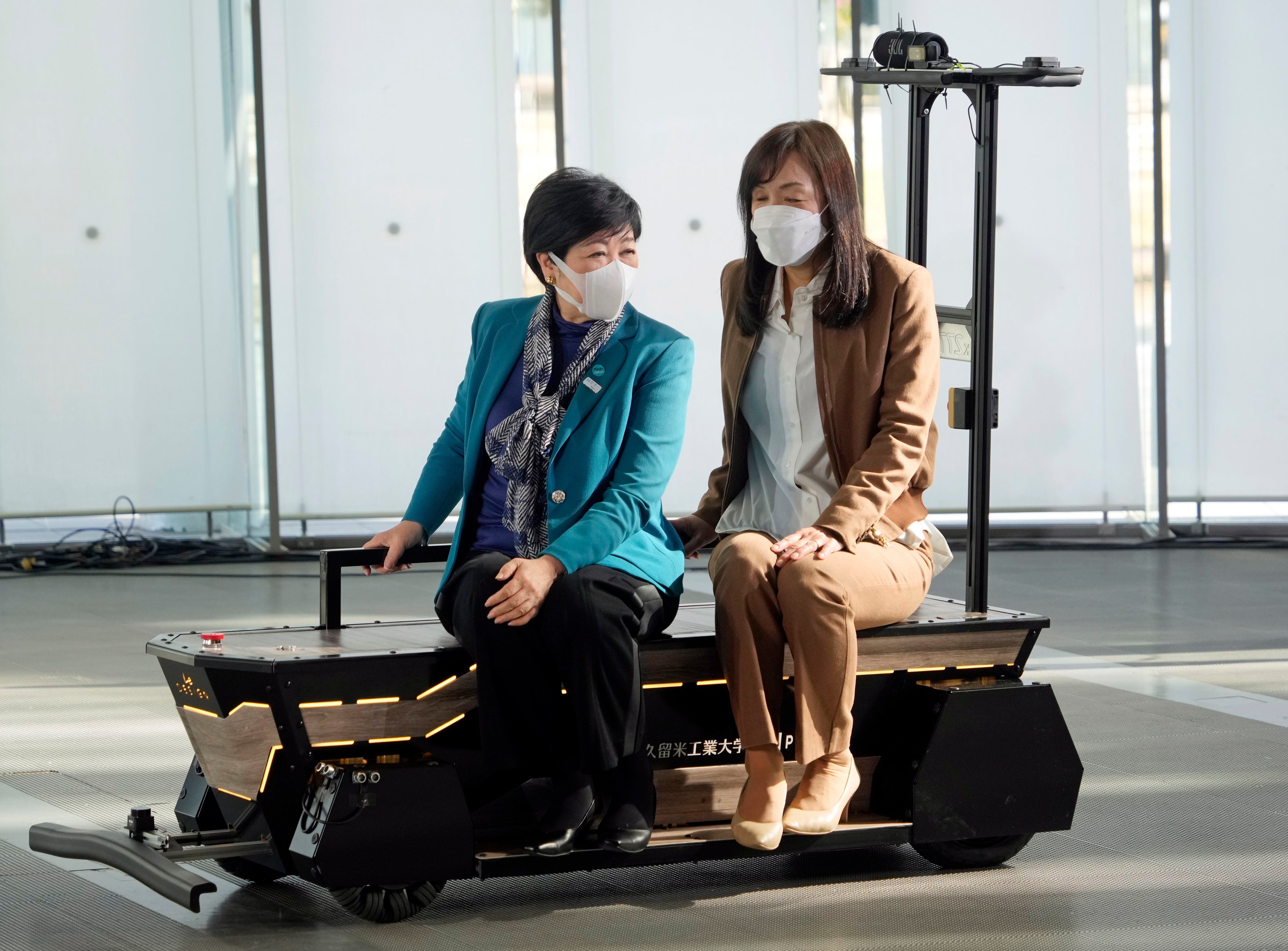:quality(75)/cloudfront-us-east-1.images.arcpublishing.com/elcomercio/2ITX5L5FLBGI5DRFMBZOYBM5GM.jpg)
A group of Japanese researchers presented a suitcase in Tokyo on Thursday autonomous that allows avoiding obstacles in order to guide blind people at the airport without the need for a cane or guide dog.
At first glance, the device looks like a regular suitcase, but it’s equipped with many of the same technologies that can be found in autonomous vehicles, such as sensors, artificial intelligence (AI) and motors that help guide visually impaired people safely around. from obstacles or other people.
LOOK: They create the first robotic birds that fly and perch on branches autonomously
“Based on my own experience of not having vision, I have developed this AI suitcase to improve accessibility and achieve free movement for people without sight.”, explains Chieko Asakawa, a computer scientist and IBM researcher who lost her vision completely when she was 14 years old after an accident.
The Japanese researcher, who had been developing the concept since 2017 in collaboration with IBM, today presented the device at the National Museum of Emerging Sciences and Innovation (Miraikan) in Odaiba (Tokyo Bay), in order to “change the mobility experience of people with disabilities and reduce the barrier to achieve greater inclusion”.
For this researcher, the idea of creating an AI suitcase came from her own experience, as she wanted to achieve independent mobility, especially in a stressful environment such as an airport.
“I have felt that there is a wall that cannot be overcome with technology alone, but now we have been able to test the suitcase and offer the opportunity for Tokyoites to experience it too.Asakawa says.
The robot suitcase, which works as a “travel partner” and can be transported in the cabin, it has a touch sensor on the handle that makes the device stop when the person releases it, as well as depth cameras and a voice control device that works connected to a mobile phone.
To ensure safe navigation, it also has a sensor (called LiDAR) that allows you to measure the distance and shape of nearby pedestrians, objects and walls, and calculates the safest route with all the information collected.
The device, equipped with large wheels and a powerful internal motor, can also be used outdoors and has special large-diameter wheels that allow it to adapt to changes in terrain of up to three centimeters.
Asakawa hopes to begin marketing the device for private use and that it can be used in various places such as airports, shopping centers and other public spaces, although for the moment it cannot function as a suitcase for use since its interior is equipped with a motor, batteries and other electronic devices.
The Tokyo Museum also presented today another autonomous mobility device in the shape of a skateboard and capacity for several people called Partner Mobility One, as well as an autonomous bus that will travel these days through Tokyo Bay so that its visitors can try it out.

Source: Elcomercio
I have worked in the news industry for over 10 years. I have a vast amount of experience in writing and reporting. I have also worked as an author for a number of years, writing about technology and other topics.
I am a highly skilled and experienced journalist, with a keen eye for detail. I am also an excellent communicator, with superb writing skills. I am passionate about technology and its impact on our world. I am also very interested in current affairs and the latest news stories.
I am a hardworking and dedicated professional, who always strives to produce the best possible work. I am also a team player, who is always willing to help out others.






